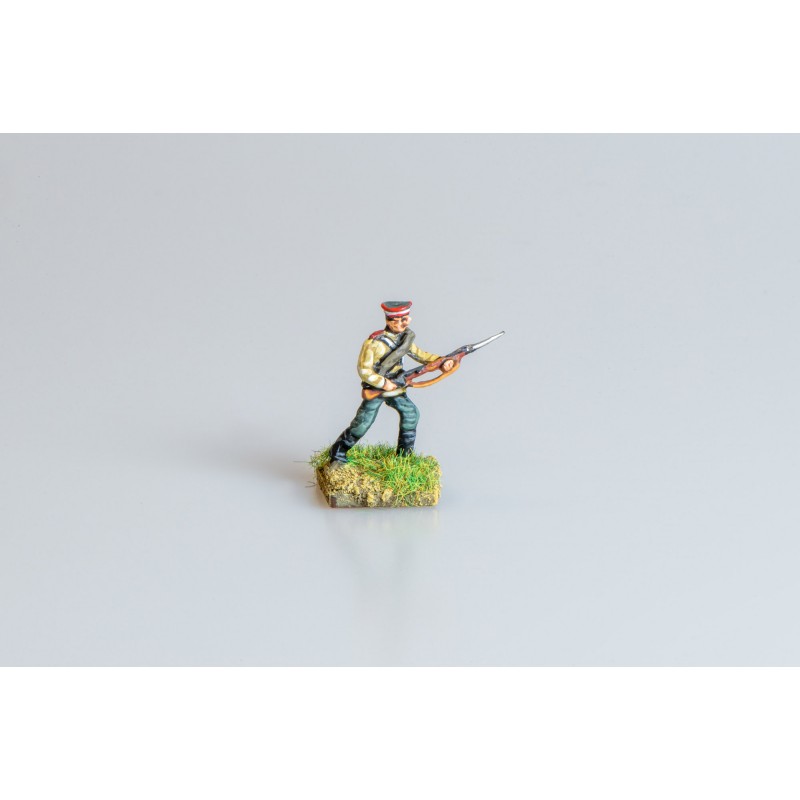This product is sold unpainted.
Additional Images.
1-2. John Briggs's very fine looking Russo-Japanese game. The scenery looks superb.
3. Image is by kind permission of the 'All Things Jacklex' blog and shows the enormity of the Russian Arm on table top operations against the Russians!
THE RUSSIAN INFANTRY ATTACK
Russian doctrine for the attack generally followed the following form. The attack was to be proceeded by artillery preparation for about an hour with the attack divided into the approach and the assault. Battalions were to deploy in depth (210m between the forward line, the company reserve and the battalion reserve) and then advance across a narrow frontage of 280m (regiments would have a frontage of 700m), forming a skirmish line at 1,400m from the enemy position. The skirmish line was to open fire at around 1,000m after which it would close in leaps and bounds until within 200 paces of the enemy being reinforced by the reserves, whereupon the assault phase commenced, with both reserves and skirmishers charging home with the bayonet.
In practice the doctrine often proved too restrictive; companies (and on occasion whole battalions) would instead advance in chain formations, each man ten paces apart, deploying some 2000m from the enemy position, twice that if the enemy artillery was active. The line would advance at the run where and when possible, often crouching and taking advantage of whatever cover the ground afforded. The final assault being driven home using the bayonet.
THE WARGAMER may wish to take account of the generality of artillery barrage, skirmish line and bayonet assault in their tactical us of the Russian army on the table top.
Source: ‘Combat, Russian Soldier versus Japanese Soldier, Manchuria 1904-05’, David Campbell, Osprey Publishing, 2019.
Jacklex Miniatures Russo-Japanese War 20mm metal wargame figures.









